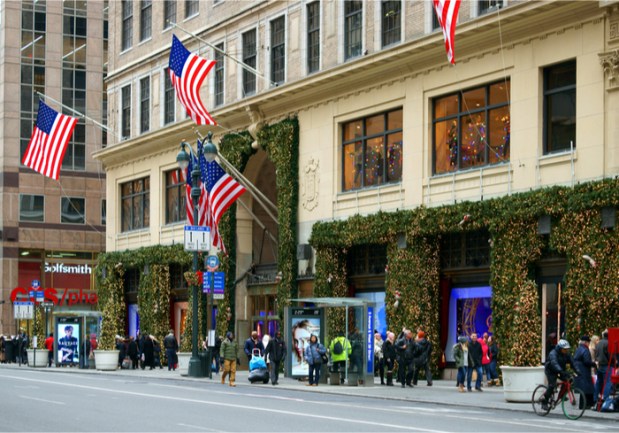eCommerce And Rising Rents Prompt Flagship Store Closures

As consumers shift their spending from brick-and-mortar stores to eCommerce sites, iconic American fashion and houseware brands are shuttering their flagship stores. Lord & Taylor, for example, plans to close its store on Manhattan’s swanky Fifth Avenue, CBS reported. That decision came after the retailer previously said that it would retain part of the historic 11-story structure for retail space. But that plan changed as Lord & Taylor — like many retailers — decided to sell off key assets and double down on digital.
“After evaluating best use scenarios for its New York City Fifth Avenue location, the Company has decided not to maintain a presence at this location,” according to a press release.“Exiting this iconic space reflects Lord & Taylor’s increasing focus on its digital opportunity and HBC’s [Hudson’s Bay Company] commitment to improving profitability.”
In place of Lord & Taylor, the historic space will soon have a non-retail use: It will be turned over to WeWork, a New York-based workspace company. (That news comes months after it was reported that Lord & Taylor would sell the building to the WeWork for $850 million.) Fortune had reported that the deal could benefit HBC and WeWork — it could lower HBC’s debt levels and give WeWork a new headquarters in New York City. The move underscores a trend among owners of brick-and-mortar retailers, such as Lord & Taylor: The need to find more revenue from their struggling retail outlets.
Changing Consumer Tastes
Beyond Lord & Taylor, many retailers on the famous luxurious city street have had to make adjustments due to a decrease in foot traffic, a rise in online discounts and an increase in rents. Ralph Lauren, too, announced that it was closing its flagship store on Fifth Avenue last year. However, at the same time, Ralph Lauren is moving its eCommerce framework to the Salesforce commerce cloud to push forward on the eCommerce front. In addition to this new focus, Ralph Lauren is planning to close additional stores. Overall, the company is looking to save $140 million in these actions by the end of the next fiscal year.
In Chicago, Crate & Barrel’s flagship store closed earlier this year. The iconic store, which opened in 1990, was considered to be “ambitious, risky, an expensive gamble,” according to the Chicago Tribune. The design of the store, for example, offered sweeping views courtesy of a revolutionary glass façade. And, at the time, retailers had stopped selling furniture on North Michigan Avenue. Today, though, the popular shopping destination brings in tourists, and those kinds of customers aren’t on the hunt for a sofa bed or a dining room table, the paper reported.
Rising Rents
For another reason, Crate & Barrel closed a flagship location in New York City 2015 due to growing rents. The retailer’s 62,000-square-foot store located at 650 Madison Ave saw its rent push above an average of $1,584 a square foot in the first quarter of 2015, according to The Wall Street Journal.
Though Crate & Barrel had another store location in SoHo, it was reported at the time that the retailer doesn’t plan on relocating the flagship store, which was scheduled to shut down in August of 2015. The store’s lease was originally set to expire in late 2019 or early 2020, but the company negotiated an early exit after foreseeing the rapid rise in rent, according to an undisclosed source.
Real Estate Opportunities
Other retailers are evaluating closing more locations in the future. Macy’s moves to invest in internet operations to win over online shoppers, for example, and it is exploring more opportunities to cash in on its real estate holdings.
“Macy’s, Inc. has been reviewing its real estate portfolio across the country to see if there are opportunities to improve the use of our assets,” the company told CNBC in January.
In terms of potential sales, analysts and investors were told last November that the company would continue to explore opportunities with Brookfield Asset Management for approximately 50 properties, including the company’s flagship location in New York. To generate cash, the company has also struck deals with its landlords — such as General Growth Properties — to sell locations.
However, eCommerce presents a bright spot for Macy’s, as the retailer has seen 33 straight quarters of double-digit online sales growth as of the third quarter of 2017. That digital torque should come as the company is spending more money on advertising its online conduits, while mulling the future of its iconic stores.
